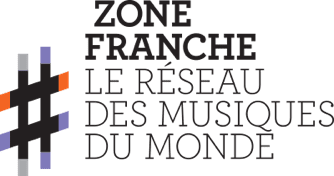In mid-December, Algerian raï and Argentine chamamé are expected to join Iraqi makam, Georgian polyphonic singing and the Barranquilla carnival on the “representative list of the intangible cultural heritage of humanity”. How is this UNESCO recognition achieved? What does it bring to artists and their audiences? We get some answers from the successful supporters of maloya from Réunion, Mongolian khoomei and the Breton fest-noz.
Johanni Curtet was still a student when he was involved in writing the dossier for the inclusion of Mongolian overtone singing, or khoomei, on the UNESCO list. “I was studying for a PhD in ethnomusicology and was still carrying out research,” he remembers. “I was called up by the Mongolian National Commission for UNESCO. I suggested ways to complete the file, to correct some oversights and offer a broader view”. “I didn’t know the language of UNESCO at all,” he now admits. “I had some idea but I’d never immersed myself in the notion of intangible cultural heritage. As I reread the file, I started to wonder. I tried to understand the language and issues at stake in these files. It took a while before I understood some of the terms, even though they were in French”.
Nomindari Shagdarsüren, who was the project manager at the Mongolian National Commission for UNESCO at the time, recalls the experience: “We tried to coordinate all the different groups involved: those who were keeping the tradition alive, researchers, officials, decision-makers who work in cultural engineering. Overtone singing is very competitive. Everyone wants to make their mark. The artists weren’t used to working together”. The process sped up in 2009, when China had “the Mongolian art of khoomei singing” listed as the heritage of humanity. This was an insult to the Mongolians across the border, who registered their own practice the following year.
“Listing itself represents two years of work,” says Nomindari. “You have to submit the file in March of the first year. Then it goes back and forth with questions and assessments. And then, if all goes well, the listing is considered complete at the end of the following year”.
Mangaljav - Л. Мангалжав / An Anthology of Mongolian Khöömii - Монгол Хөөмийн Сонгомол - Présentation de l’anthologie en 2 CDs que Nomindari Shagdarsüren et Johanni Curtet ont publié en 2017
As far as Charles Quimbert was concerned, “preparing the file wasn’t tedious”. The Breton singer and clarinettist, long-time president of Dastum, an association for the collection and preservation of oral heritage, oversaw the inclusion of the fest-noz on the UNESCO list and only has fond memories of the process: “It took time and work but in a positive way. We came together to do it and tried to be as participatory as possible. We went out to meet people and took their comments into account. It was a very fruitful method and approach. It allowed us to put into words a phenomenon we hadn’t thought that much about. We would go to the fest-noz, dance and have a drink, but we didn’t talk about it. It gave us an opportunity to think again about what we were saying, to learn to defend our practices with arguments on an international stage”.
Charles Quimbert avec Roland Brou et Mathieu Hamon
However, when we ask about the concrete results of the fest-noz’s inclusion on the intangible heritage of humanity list, Charles Quimbert remains realistic: “Little has changed for those who dance at a fest-noz or organise it. The number of entries hasn’t increased”. The effect can be seen elsewhere: “People saw it as a recognition given to all the dancers, musicians, organisers and all the volunteers”.
In Réunion too, “the inclusion of maloya on the intangible cultural heritage of humanity list shed light on this part of Réunion’s musical culture in the months or years that followed,” explains Guillaume Samson, co-author of the essay L’univers du maloya : histoire, ethnographie, littérature [The world of maloya: history, ethnography, literature]. “Among the activists and supporters of this music who did not oppose the listing (and there were some who did), it generated an unprecedented feeling of pride and cultural recognition,” confirms the anthropologist and ethnomusicologist, who adds, playfully, “perhaps the fact that Danyèl Waro received a Womex Award in 2010 isn’t unrelated to the inclusion of maloya on the list in 2009!”
Danyèl Waro, ambassadeur du maloya
While some are concerned about a possible folklorisation of musical practices at the end of this process, Guillaume Samson appears confident: “Maloya remains a dynamic form of music, both as a genre in its own right and a source of inspiration for musicians who play in other styles (electro, jazz, etc.) on Réunion”. Johanni Curtet remembers that, for UNESCO, “intangible heritage is a living heritage, one that’s changing. The intergovernmental committee for the safeguarding of cultural heritage recommends that nothing should become frozen or treated as a museum exhibit”.
“The definition of intangible heritage is really beautiful,” adds Charles Quimbert. “It’s seen as a permanent re-creation (nothing is fixed); it grants an important role to the people who keep these heritages alive, talks about a feeling of identity and community, which is a rare mix in France”. But for the former director of Bretagne Culture Diversité, what has changed the most in Brittany since the listing in 2012 “is that now we talk about intangible heritage without feeling like it’s a four-letter word. The notion involves reflecting on cultural diversity. Beyond our specific features, how do we look at the differences of others, how do we live with them? This is a very contemporary, very topical debate”.
Perhaps more of us should learn the language of UNESCO so that we can take part in the discussion…


